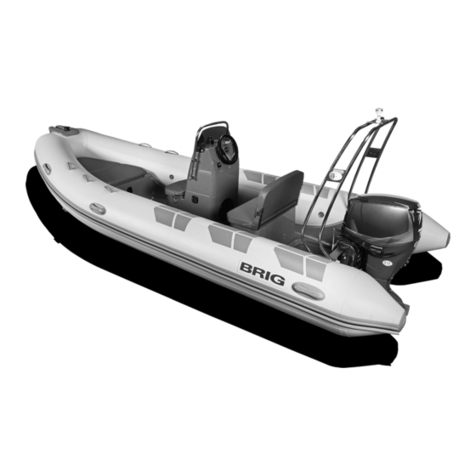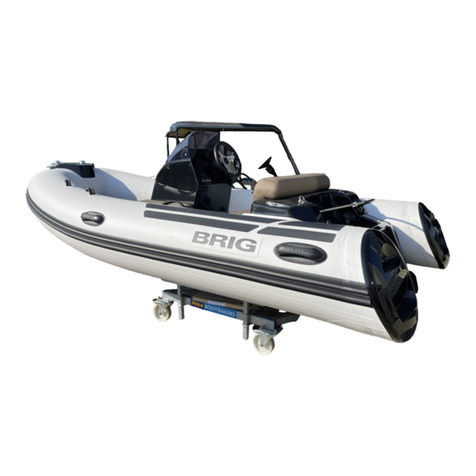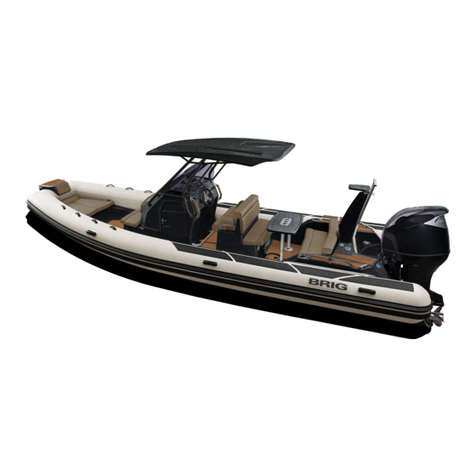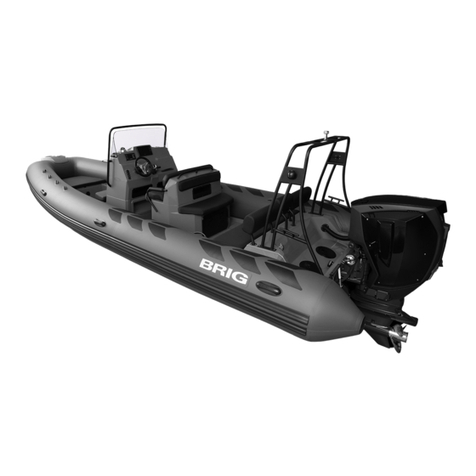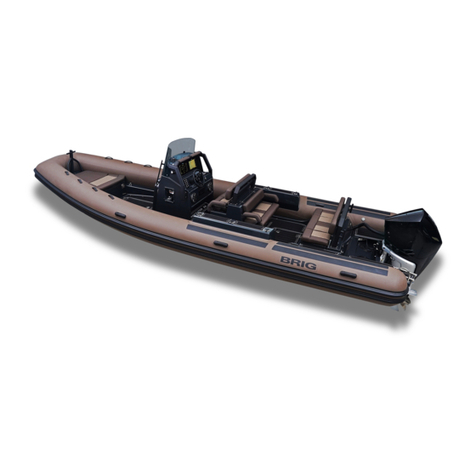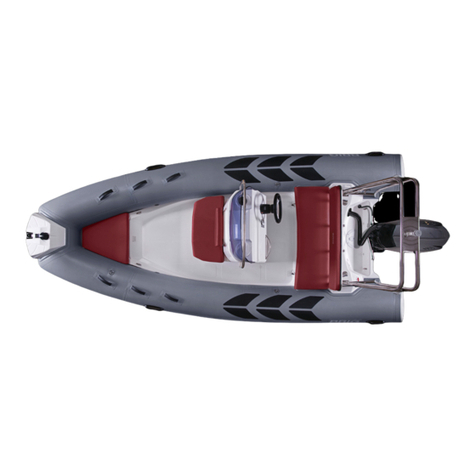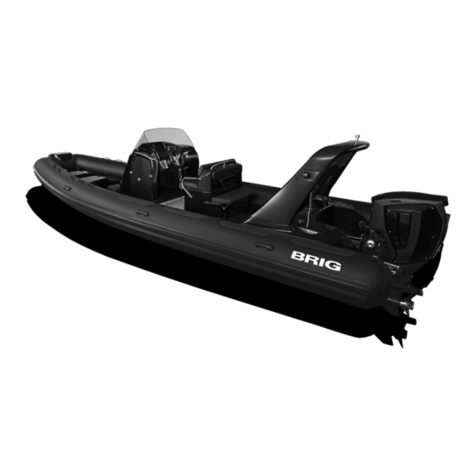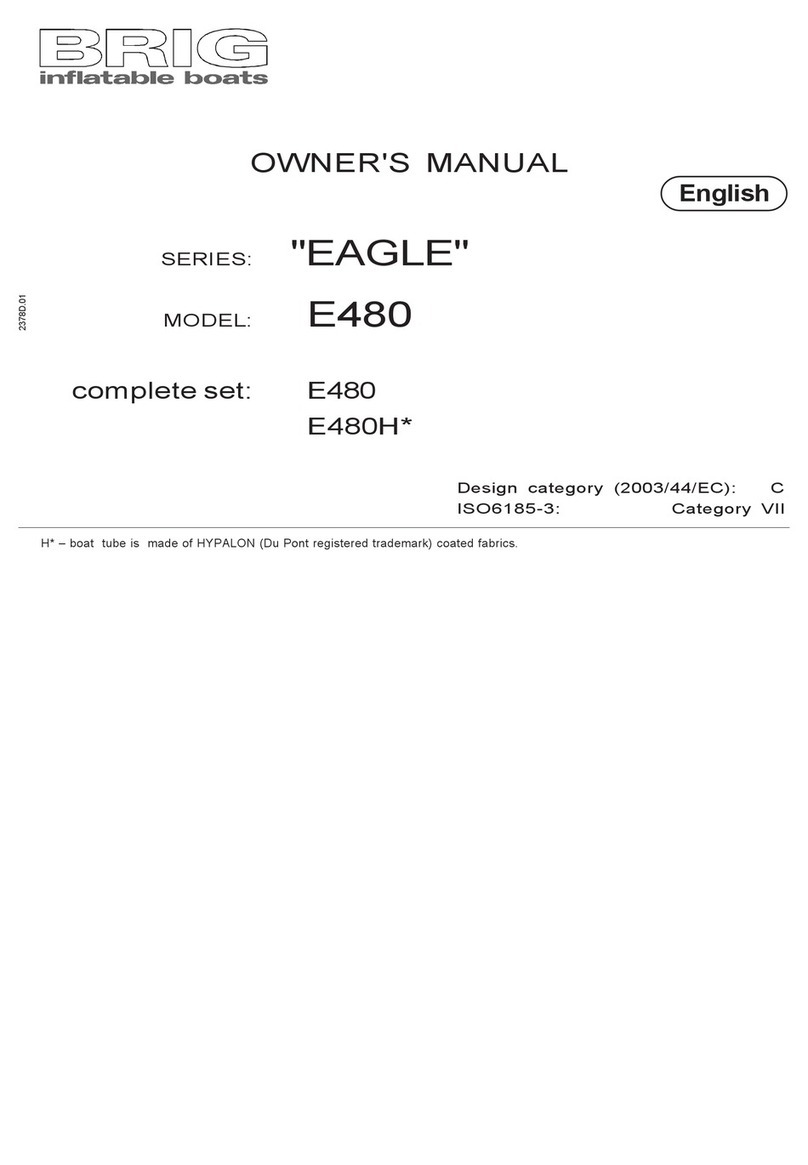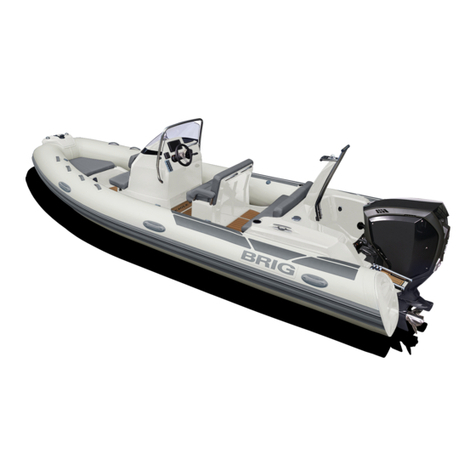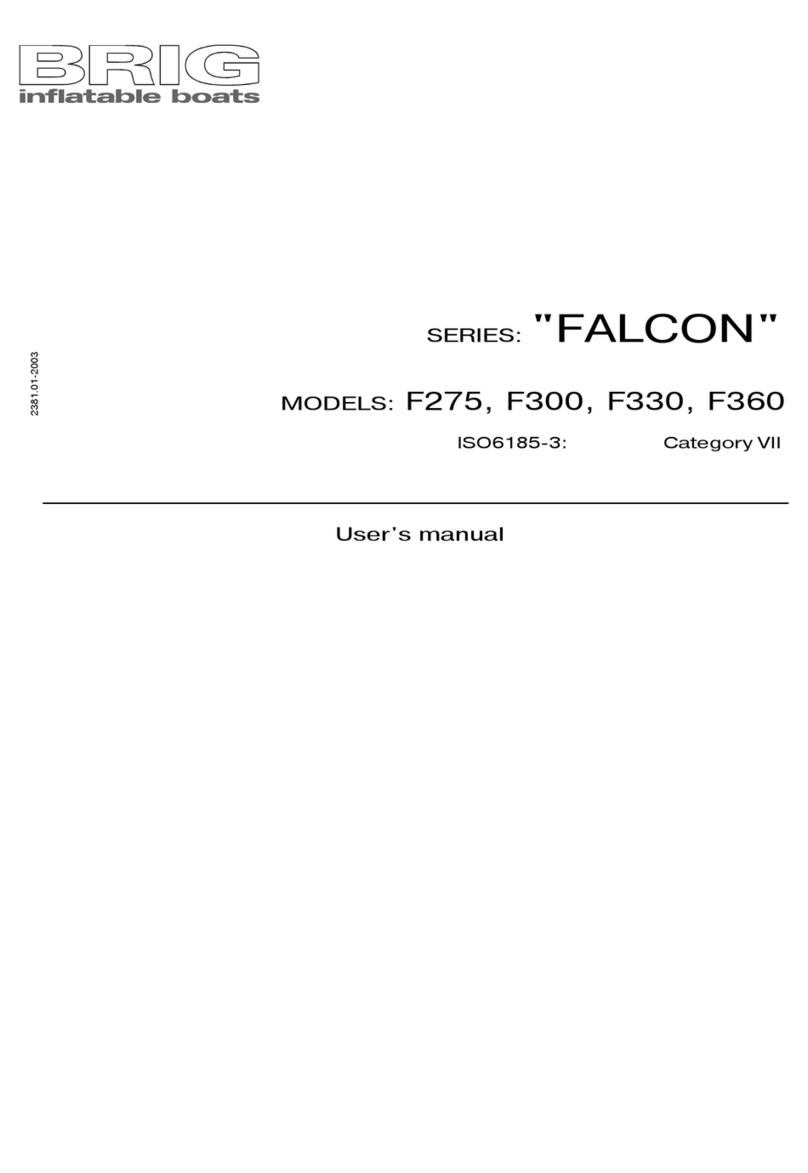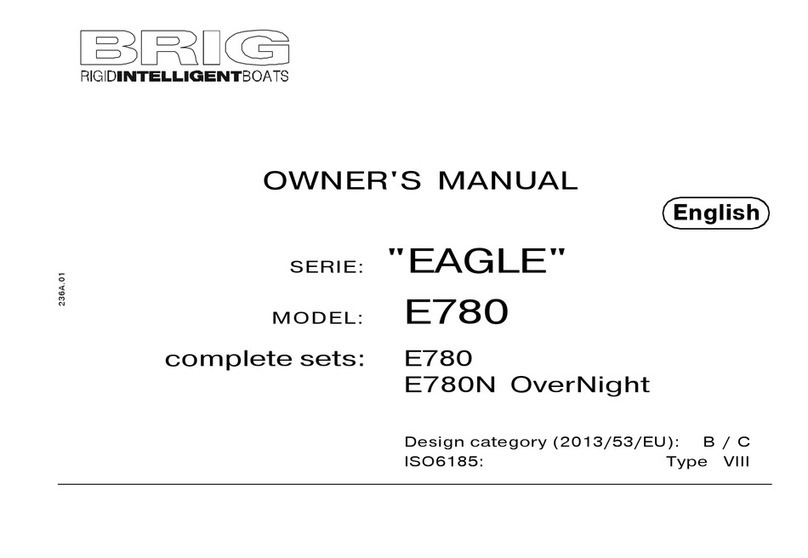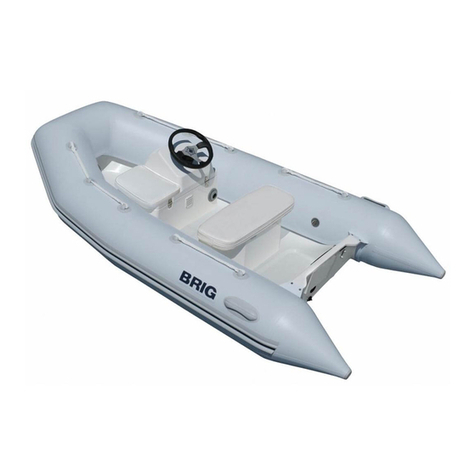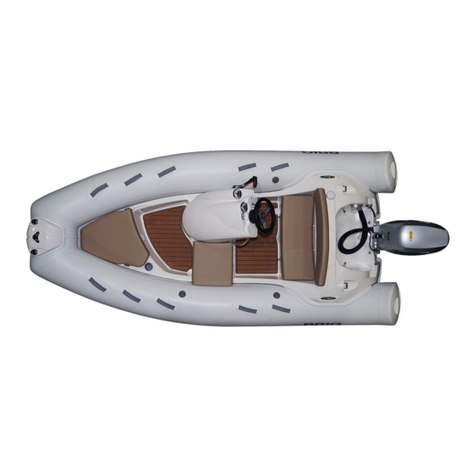
–10–
6.9.Set the lateral beams in the cut-outs provided on segments
No.5, No.4, No.3 (Fig.10). To do it, place the beam in the boat
from one side in opposition to the cut-outs, hook the boarding
edge with the beam from below and make a pushing motion from
top to bottom and forward. Thereat, your may hold up the floor
edge from below through the bottom.
Check to ensure that the beams do not "catch" the balloon. The
segment edges should enter the beam cut-outs tightly.
6.10.Make sure again that the edges of the segments and beams fall
within the folding line of the balloon and bottom connecting tape.
6.11.Check to ensure that the rigid boarding was assembled
correctly: the segments should be arranged closely to each other
without misalignment in the increasing order of the numbers from
the bow to the aft of the boat. The keel valve should fall within
the centre of the hole of segment No.2 (Fig.11). If the keel
valve is outside the centre of the hole of segment No.2 adjust the
keel position by taking hold of the valve flange and raising the
boat bow by the lifeline. Reset the valve.
6.12.Set the rigid seat as shown in the figure 12.
To do it, insert the fixing devices arranged on the lower surface of
the wooden seats into the holes of the brackets pasted onto the
balloon. Turn and fix lugs of the fixing devices till they clicked as
shown in the figure.
6.13.Fill the balloon compartments with air using the pump from the
complete set. First fill the aft compartments, then medium compart-
ments and, finally, bow compartment. Thereat, do not bring the
pressure up to its operating value.
6.14.After all the compartments are filled check to ensure that the
boarding is arranged correctly inside the Boat.
If necessary, set the boarding as required by applying a force to the
edges of the boarding segments.
Fig.10
Fig.11
Fig.12a
